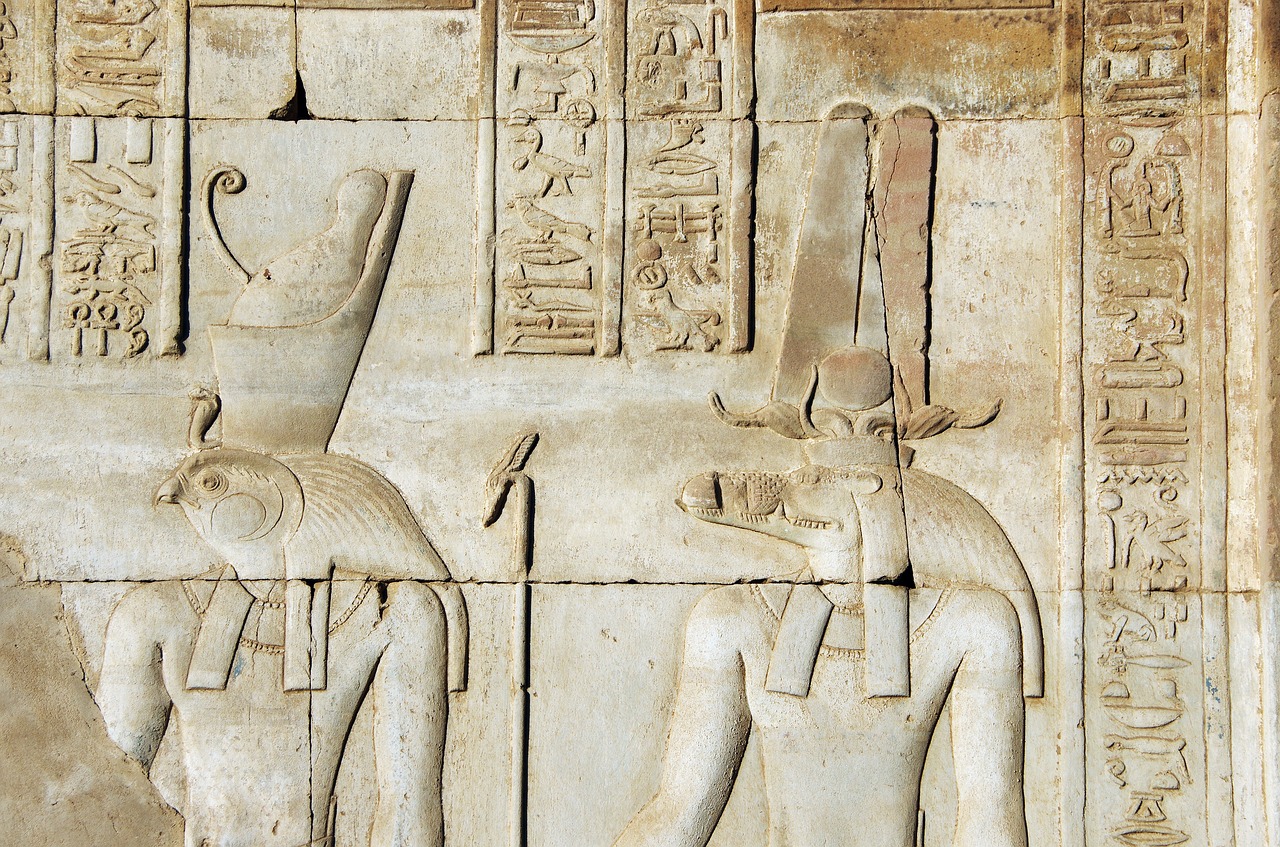Sobek is a fascinating figure among the deities of ancient Egypt, renowned for his distinct crocodile head and the significant strength he embodies. This exploration delves into Sobek’s myths, his revered place in the religion of ancient Egypt, and the vital roles he played in their culture.
Who is Sobek?
Sobek, also referred to as Sebek, Sochet, or Suchos, is one of the most captivating gods within Egyptian mythology. Typically depicted either as a man with a crocodile’s head or simply as a crocodile, Sobek holds dominion over the Nile River, fertility, and military prowess. His influence extends into both the physical realm and the ethereal domains of supernatural belief.
The Meaning of Sobek’s Name
Sobek’s name has its roots in ancient Egyptian language; though its precise interpretation is a subject of scholarly debate, it is commonly linked to the powerful crocodile. This connection encompasses the essence of strength and the unpredictability characteristic of these formidable reptiles.
Sobek’s Role in Ancient Egyptian Religion
Sobek was especially significant in regions closely associated with waterways, particularly the Nile. The river symbolizes the essence of life for ancient Egyptians, and Sobek, as its divine protector, was greatly revered. He was believed to have command over the waters, promoting fertile land and bountiful harvests. Additionally, Sobek’s ties to the Nile intertwined him with themes of life, death, and rebirth, which are paramount in Egyptian mythology.
Sobek’s Temples and Forms of Worship
Numerous temples dedicated to Sobek can be found throughout Egypt, with notable ones situated in Crocodilopolis (known today as Faiyum) and Kom Ombo. Within these sacred spaces, live crocodiles—considered to embody Sobek—were maintained and afforded immense respect. Priests would often adorn these creatures with ornate jewelry and offer them special foods, reflecting the deep veneration and reverence held for Sobek.
Myths and Legends Involving Sobek
Sobek’s narratives profoundly influenced the worldview of the ancient Egyptians, illustrating his dual roles as both a creator and protector. The following are three of the notable myths associated with him:
- Sobek’s Creation Myth: In various accounts, Sobek is said to have emerged from the chaotic primordial waters, symbolizing the first piece of land to arise from the depths. This myth accentuates his connections to creation and his power to impose order upon chaos.
- Sobek and the Nile Floods: One prominent tale associates Sobek with the annual flooding of the Nile, a phenomenon essential for agriculture. These floods replenished the land with nutrient-rich silt, thus highlighting Sobek’s critical role in ensuring the fertility and survival of the Egyptian populace.
- Sobek in the Afterlife: Sobek is similarly acknowledged for his part in the afterlife journey of the deceased, offering protection and guidance. His fierce yet guardian nature is evident here, providing comfort to those navigating the Egyptian underworld and steering them towards Osiris, the god overseeing the afterlife.
Sobek’s Divine Relationships
Within the Egyptian pantheon, Sobek has notable connections to various gods and goddesses that complete his story:
- Neith: Often regarded as his mother, this goddess of war and weaving elevates Sobek’s stature.
- Set: Association with this storm god emphasizes Sobek’s ambivalence of creation and destruction.
- Renenutet: Sometimes depicted as his consort, this cobra goddess represents fertility, bridging Sobek’s water domain with land fertility.
- Osiris: Sobek’s role in locating Osiris’ dismembered parts after his demise reinforces his themes of regeneration.
- Ra: His protective role extends to Ra, ensuring the sun god’s safety during his nightly underworld journey.
- Hathor: His connection with her signifies the life-giving aspects of love and beauty.
Powers and Symbols of Sobek
Sobek stands as one of the most multifaceted deities in Egyptian lore, with powers representative of his revered status:
Powers of Sobek
- Military Might: Sobek was frequently invoked for strength and victories in battle.
- Fertility: His dominion over the Nile aligns with his capacity to bless both lands and peoples with fertility.
Symbols Associated with Sobek
- Crocodile: A symbol of duality is represented through Sobek’s form, intertwining reverence and fear.
- Water: His crucial association with the Nile underscores his influence on agriculture and prosperity.
- Ankh: This symbol of life also aligns with Sobek’s creation and sustenance roles.
Sobek in Contemporary Culture
The legacy of Sobek thrives beyond ancient texts, finding a place in modern literature, films, and games where he frequently symbolizes raw power and the allure of ancient mysteries. His lasting presence keeps the fascination with his narrative and the Egyptian pantheon alive.
Fun Facts About Sobek
- Sacred Crocodiles: Revered as earthly manifestations of Sobek, sacred crocodiles were cherished and preserved in temples.
- Healing Attributes: Sobek’s waters were believed to possess healing powers, aiding in rejuvenation.
- Hybrid Depictions: Certain artistic interpretations illustrate Sobek with a lion’s body, integrating notions of strength alongside his crocodilian aspects.
Frequently Asked Questions About Sobek
- Is Sobek mentioned in Religious Texts?: No, Sobek does not appear in the Bible and is independent of those religious narratives.
- What does Sobek’s headdress signify?: His headdress, often adorned with the sun disc and feathers, denotes his divinity and connection with Ra.
- How does Sobek fit into the universe’s creation?: Though not a creator deity per se, he symbolizes the emergence of land from chaos.
Sobek embodies a complex nature, not merely categorized as good or bad; he is a guardian of fertility, fierce in battle, yet also a symbolic reminder of the Nile’s unpredictable nature. His narrative intricately intertwines themes of destruction and regeneration, woven together in the fabric of Egyptian mythology.
In summary, Sobek represents both the life-giving attributes of the Nile and the fearsomeness of nature, remaining a powerful symbol in ancient Egyptian belief.
[title] The Dual Nature of Sobek: Guardian of the Nile and Creator [title]



